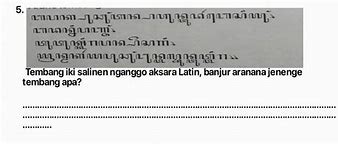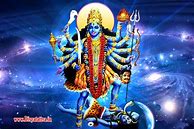
Contoh perhitungan ampere MCB
Misalnya barang – barang elektronik yang Anda gunakan di rumah meliputi, televisi, lampu penerangan, AC, kulkas, setrika, dan penanak nasi. Masing – masing peralatan tersebut konsumsi daya listriknya seperti berikut ini.
Total keseluruhan daya listrik dari perangkat elektronik tersebut adalah 200 watt + 400 watt + 300 watt + 100 watt + 150 watt + 150 watt = 1300 watt.
Cara menghitung MCB maka cukup gunakan rumus sebelumnya, yakni P = V x I. Karena yang kita cari adalah I, maka rumusnya menjadi I = P/V.
I = 1300 watt / 220 volt
I = 5,9 ampere (dibulatkan menjadi 6 ampere)
Jadi agar seluruh barang elektronik bisa dihidupkan tanpa membuat jeglek, maka ukuran MCB minimal harus 6 ampere agar sanggup menghidupkan semuanya. Contoh di atas hanya perkiraan saja, karena bisa saja barang elektronik tersebut membutuhkan daya listrik yang berbeda. Cara menghitung MCB sangat mudah dilakukan. Jadi Anda sendiri juga bisa melakukannya.
Cara menghitung MCB sesuai kebutuhan
Cara menghitung MCB tentu harus melalui perhitungan cermat. Anda tidak bisa membuatnya sesuai keinginan saja. Ada rumus yang telah ditetapkan untuk menghitung amperenya dan ini diterapkan dalam menentukan ukuran MCB di rumah.
Jadi hasil 4 ampere atau 6 ampere yang dibuat tersebut sudah bukan asal tebak, melainkan berdasarkan perhitungan. Rumus yang biasanya digunakan adalah P = V x I
Rumus tersebut berlaku di semua tempat dalam cara menghitung MCB yang dipilih. Jadi sebelum Anda memasang listrik di rumah baru, sebaiknya hitung terlebih dahulu kebutuhan menggunakan rumus ditetapkan tersebut.
Misalnya Anda memasang listrik dengan daya 900 VA. Sedangkan tegangan listrik kebanyakan sebesar 220 volt. Jadi cara menentukan besar ukuran MCB adalah dihitung lewat rumus P = V x I tersebut.
Dalam konsep perhitungan, jika yang dicari adalah I maka rumusnya :
I = 900 VA / 2020 volt
I = 4,09 ampere (atau dibulatkan menjadi 4 ampere). Dari rumus ini lah diketahui bahwa untuk daya listrik sebesar 900 VA, ampere mcb yang dibutuhkan adalah 4 ampere.
Ukuran ampere MCB phase 1
Perbedaan mencolok MCB 2 dan 3 fasa adalah bentuk MCB-nya seperti terdiri dari MCB 1 fasa yang ditempel berdampingan. Sedangkan untuk mengetahui ukuran MCB phase 1 bisa dari tabel berikut :
Tabel Ukuran ampere MCB phase 1
Memasang MCB (Miniature Circuit Breaker) untuk sistem 1, 2, dan 3 fasa memerlukan prosedur yang cermat untuk memastikan keamanan dan efisiensi.
Untuk MCB 1 fasa, biasanya melibatkan dua koneksi: satu dari sumber listrik (phase) dan satu ke beban. Anda memasang MCB ini dengan menghubungkan kabel phase ke terminal atas MCB dan kabel ke terminal bawah.
Untuk MCB 2 fasa, prosesnya serupa, tetapi dengan dua kabel phase yang terhubung ke dua terminal terpisah pada MCB. Sedangkan untuk MCB 3 fasa, yang sering digunakan dalam pengaturan industri atau komersial, Anda harus menghubungkan tiga kabel phase ke tiga terminal yang tersedia pada MCB.
Penting untuk selalu memastikan bahwa koneksi dilakukan dengan benar dan aman, serta mematikan daya utama sebelum memulai pemasangan untuk menghindari resiko sengatan listrik. Selalu ikuti standar keamanan dan pertimbangkan untuk meminta bantuan dari seorang profesional jika Anda tidak yakin. Segera dapatkan MCB dengan kualitas terbaik dari PT Mega Citra Bestari.
Variasi simbol berdasarkan fungsi
Panduan ikon kartu SD
1. Kapasitas data 2. Kecepatan baca maksimum (sebagian kartu mungkin juga mencantumkan kecepatan tulis) 3. Jenis kapasitas 4. Kelas kecepatan video 5. Jenis kecepatan UHS bus (I atau II) 6. Kelas kecepatan SD 7. Kelas kecepatan UHS
Di bawah ini, kita mencermati perbedaan spesifikasi kartu, dan apa pengaruhnya pada pilihan Anda.
Cultural representation
Since prehistoric times humans have depicted and later described their perception of the Moon and its importance for them and their cosmologies. It has been characterized and associated in many different ways, from having a spirit or being a deity, and an aspect thereof or an aspect in astrology.
For the representation of the Moon, especially its lunar phases, the crescent (🌙) has been a recurring symbol in a range of cultures since at least 3,000 BCE or possibly earlier with bull horns dating to the earliest cave paintings at 40,000 BP.[220][226] In writing systems such as Chinese the crescent has developed into the symbol 月, the word for Moon, and in ancient Egyptian it was the symbol 𓇹, meaning Moon and spelled like the ancient Egyptian lunar deity Iah,[334] which the other ancient Egyptian lunar deities Khonsu and Thoth were associated with.
Iconographically the crescent was used in Mesopotamia as the primary symbol of Nanna/Sîn,[224] the ancient Sumerian lunar deity,[335][224] who was the father of Inanna/Ishtar, the goddess of the planet Venus (symbolized as the eight pointed Star of Ishtar),[335][224] and Utu/Shamash, the god of the Sun (symbolized as a disc, optionally with eight rays),[335][224] all three often depicted next to each other. Nanna/Sîn is, like some other lunar deities, for example Iah and Khonsu of ancient Egypt, Mene/Selene of ancient Greece and Luna of ancient Rome, depicted as a horned deity, featuring crescent shaped headgears or crowns.[336][337]
The particular arrangement of the crescent with a star known as the star and crescent (☪️) goes back to the Bronze Age, representing either the Sun and Moon, or the Moon and the planet Venus, in combination. It came to represent the selene goddess Artemis, and via the patronage of Hecate, which as triple deity under the epithet trimorphos/trivia included aspects of Artemis/Diana, came to be used as a symbol of Byzantium, with Virgin Mary (Queen of Heaven) later taking her place, becoming depicted in Marian veneration on a crescent and adorned with stars. Since then the heraldric use of the star and crescent proliferated, Byzantium's symbolism possibly influencing the development of the Ottoman flag, specifically the combination of the Turkish crescent with a star,[338] and becoming a popular symbol for Islam (as the hilal of the Islamic calendar) and for a range of nations.[339]
The features of the Moon, the contrasting brighter highlands and darker maria, have been seen by different cultures forming abstract shapes. Such shapes are among others the Man in the Moon (e.g. Coyolxāuhqui) or the Moon Rabbit (e.g. the Chinese Tu'er Ye or in Indigenous American mythologies the aspect of the Mayan Moon goddess, from which possibly Awilix is derived, or of Metztli/Tēcciztēcatl).[333]
Occasionally some lunar deities have been also depicted driving a chariot across the sky, such as the Hindu Chandra/Soma, the Greek Artemis, which is associated with Selene, or Luna, Selene's ancient Roman equivalent.
Color and material wise the Moon has been associated in Western alchemy with silver, while gold is associated with the Sun.[340]
Through a miracle, the so-called splitting of the Moon (Arabic: انشقاق القمر) in Islam, association with the Moon applies also to Muhammad.[341]
EUR/USD 1.050 | USD/JPY 153.690 | GBP/USD 1.262 | AUD/USD 0.636 | Gold 2,648.25/oz | Silver 31.03/oz | Wall Street 43,828.06 | Nasdaq 19,926.72 | IDX 7,324.79 | Bitcoin 101,372.97 | UOB Group: Penurunan EUR/USD kemungkinan tidak menembus dengan jelas di bawah 1.0440, 2 hari, #Forex Teknikal | USD/CAD diperdagangkan dekat level tertinggi baru rmpat tahun di dekat 1.4250 di tengah penguatan dolar AS, 2 hari, #Forex Teknikal | Escrivá, ECB: Logis jika melakukan penurunan suku bunga lebih lanjut dalam pertemuan-pertemuan mendatang, 2 hari, #Forex Fundamental | Anggota DPR Negara Bagian Texas Giovanni Capriglione secara resmi mengajukan RUU untuk mendirikan Cadangan Bitcoin Strategis bagi negara bagian tersebut, 2 hari, #Kripto Fundamental | Harga emas rebound ke sekitar $2,690 di sesi Asia hari Jumat, naik 42%, 2 hari, #Emas Teknikal | Harga emas pulih dari penurunan ke sekitar $2,690 selama jam perdagangan Asia pada hari Jumat setelah turun dari level tertinggi lima minggu di sesi sebelumnya, 2 hari, #Emas Teknikal | Meningkatnya ketegangan di Timur Tengah dan permintaan struktural yang kuat oleh bank-bank sentral global berkontribusi pada reli XAU/USD baru-baru ini, yang telah naik lebih dari 6% selama sebulan, 2 hari, #Emas Fundamental | Harga emas menguat 0.9% pada hari Rabu dan ditutup di atas level penting $2,700 setelah laporan inflasi AS sesuai dengan ekspektasi pasar, 2 hari, #Emas Fundamental
Natural satellite orbiting Earth
The Moon is Earth's only natural satellite. It orbits at an average distance of 384,400 km (238,900 mi), about 30 times the diameter of Earth. Tidal forces between Earth and the Moon have synchronized the Moon's orbital period (lunar month) with its rotation period (lunar day) at 29.5 Earth days, causing the same side of the Moon to always face Earth. The Moon's gravitational pull—and, to a lesser extent, the Sun's—are the main drivers of Earth's tides.
In geophysical terms, the Moon is a planetary-mass object or satellite planet. Its mass is 1.2% that of the Earth, and its diameter is 3,474 km (2,159 mi), roughly one-quarter of Earth's (about as wide as the United States from coast to coast). Within the Solar System, it is the largest and most massive satellite in relation to its parent planet, the fifth largest and most massive moon overall, and larger and more massive than all known dwarf planets.[17] Its surface gravity is about one sixth of Earth's, about half of that of Mars, and the second highest among all Solar System moons, after Jupiter's moon Io. The body of the Moon is differentiated and terrestrial, with no significant hydrosphere, atmosphere, or magnetic field. It formed 4.51 billion years ago, not long after Earth's formation, out of the debris from a giant impact between Earth and a hypothesized Mars-sized body called Theia.
The lunar surface is covered in lunar dust and marked by mountains, impact craters, their ejecta, ray-like streaks, rilles and, mostly on the near side of the Moon, by dark maria ("seas"), which are plains of cooled lava. These maria were formed when molten lava flowed into ancient impact basins. The Moon is, except when passing through Earth's shadow during a lunar eclipse, always illuminated by the Sun, but from Earth the visible illumination shifts during its orbit, producing the lunar phases.[18] The Moon is the brightest celestial object in Earth's night sky. This is mainly due to its large angular diameter, while the reflectance of the lunar surface is comparable to that of asphalt. The apparent size is nearly the same as that of the Sun, allowing it to cover the Sun completely during a total solar eclipse. From Earth about 59% of the lunar surface is visible over time due to cyclical shifts in perspective (libration), making parts of the far side of the Moon visible.
The Moon has been an important source of inspiration and knowledge for humans, having been crucial to cosmography, mythology, religion, art, time keeping, natural science, and spaceflight. The first human-made objects to fly to an extraterrestrial body were sent to the Moon, starting in 1959 with the flyby of the Soviet Union's Luna 1 and the intentional impact of Luna 2. In 1966, the first soft landing (by Luna 9) and orbital insertion (by Luna 10) followed. On July 20, 1969, humans for the first time stepped on an extraterrestrial body, landing on the Moon at Mare Tranquillitatis with the lander Eagle of the United States' Apollo 11 mission. Five more crews were sent between then and 1972, each with two men landing on the surface. The longest stay was 75 hours by the Apollo 17 crew. Since then, exploration of the Moon has continued robotically, and crewed missions are being planned to return beginning in the late 2020s.
The usual English proper name for Earth's natural satellite is simply Moon, with a capital M.[19][20] The noun moon is derived from Old English mōna, which (like all its Germanic cognates) stems from Proto-Germanic *mēnōn,[21] which in turn comes from Proto-Indo-European *mēnsis 'month'[22] (from earlier *mēnōt, genitive *mēneses) which may be related to the verb 'measure' (of time).[23]
Occasionally, the name Luna is used in scientific writing[24] and especially in science fiction to distinguish the Earth's moon from others, while in poetry "Luna" has been used to denote personification of the Moon.[25] Cynthia is another poetic name, though rare, for the Moon personified as a goddess,[26] while Selene (literally 'Moon') is the Greek goddess of the Moon.
The English adjective pertaining to the Moon is lunar, derived from the Latin word for the Moon, lūna. Selenian [27] is an adjective used to describe the Moon as a world, rather than as a celestial object,[28] but its use is rare. It is derived from σελήνη selēnē, the Greek word for the Moon, and its cognate selenic was originally a rare synonym[29] but now nearly always refers to the chemical element selenium.[30] The element name selenium and the prefix seleno- (as in selenography, the study of the physical features of the Moon) come from this Greek word.[31][32]
Artemis, the Greek goddess of the wilderness and the hunt, came to also be identified as the goddess of the Moon (Selene) and was sometimes called Cynthia, after her birthplace on Mount Cynthus.[33] Her Roman equivalent is Diana. The names Luna, Cynthia, and Selene are reflected in technical terms for lunar orbits such as apolune, pericynthion and selenocentric.
The astronomical symbol for the Moon is a crescent\decrescent, \, for example in M☾ 'lunar mass' (also ML).
Apakah Anda sedang mencari MCB?
Setelah memahami cara menghitung MCB untuk rumah Anda, kini tiba saatnya memastikan rumah Anda dilindungi oleh ukuran MCB berkualitas tinggi. Pilihlah produk dari PT Mega Citra Bestari, salah satu supplier resmi Schneider Electric di Indonesia.
Komp. Kantor Mangga Dua Blok A7 No.11Jl. Jagir Wonokromo No.100, East Java 60244
Telepon: (031) 8490300Fax: (031) 8490400Email: [email protected]: 08113620300
Dalam menentukan peringkat suatu situs, mesin pencari juga menggunakan data pengguna, seperti riwayat pencarian pengguna, pengaturan pencarian, dan data lokasi.
Selain itu, faktor seperti click through rate (CTR), waktu yang dihabiskan pengguna di halaman (dwell time), serta bounce rate memainkan peran penting dalam penentuan performa halaman.
Maka penting bagi Anda untuk memahami beberapa hal berikut:
Dengan memperhatikan faktor data pengguna, Anda dapat membantu mesin pencari menemukan dan menampilkan konten di web Anda kepada pengguna yang tepat.
Inilah yang nantinya juga akan berperan dalam peningkatan peringkat halaman web di hasil pencarian.
Jenis MCB yang umum digunakan
Besarnya ampere MCB berbeda – beda satu salam lain karena kebutuhan listrik setiap orang juga berbeda. KWH meter yang dipasang oleh pihak PLN disertai dengan MCB secara langsung. Besarnya ampere yang dipasang tergantung berapa yang Anda butuhkan dan kemampuan finansial.
Semakin besar konsumsi listrik keluarga Anda setiap hari maka ukuran MCB yang pasang sebaiknya menyanggupi kebutuhan besar tersebut. Sebagai contoh, ketika Anda ingin memasang daya sebesar 1300 VA, maka mcbnya biasanya berukuran 6 ampere.
Jika di rumah Anda hanya butuh 900 Volt listrik, maka mcbnya cukup menggunakan 4 ampere. Jasa instalasi umumnya menjelaskan kepada pemilik rumah, agar bisa memilih sendiri jenis MCB mana yang akan mereka gunakan.
Baca Juga: Pengertian MCB di Instalasi Listrik, ini Fungsi dan Jenisnya
Untuk mengetahui jenis MCB, bisa diketahui dari dengan banyaknya jalur listrik (phase) yang digunakan ada MCB jalur 1, 2 dan 3.
MCB 1 fasa umumnya digunakan oleh perumahan karena daya yang tidak terlalu besar, sedangkan 2 dan 3 fasa digunakan untuk perkantoran dan industri yang memerlukan lebih banyak daya listrik untuk kegiatan operasionalnya.
MCB 2 fasa terdiri dari 2 MCB 1 fasa sedangkan MCB 3 fasa terdiri dari 3 MCB 1 fasa yang saklarnya disatukan.
Selain berbeda bentuknya pada MCB 2 phase dan MCB 3 pole memiliki operasi tegangan listrik yang berbeda. Pada umumnya di Indonesia sendiri rata-rata yang digunakan adalah 380 Volt AC sehingga MCB 2 dan 3 fasa memiliki spesifikasi dengan voltase tersebut.
C. Saldo Normal Ekuitas
“Ekuitas” menjelaskan posisi atau kelompok akun pada “Laporan Neraca” di sisi “Liabilitas dan Modal” pada Kledo. Modal atau Ekuitas merupakan setoran kekayaan (sumber ekonomi perusahaan) yang berasal dari pemilik kepada perusahaan dan dapat dihitung dalam satuan moneter. Tentu saja bukan hanya sekedar “Ekuitas”, tetapi juga keseluruhan akun yang termasuk kelompok “Ekuitas”. Sama seperti “Liabilitas”, “Saldo Normal” untuk “Ekuitas” ini berada pada sisi Kredit (Cr). Di Kledo, pada bagian “Saldo Awal”, akun dengan kelompok “Ekuitas” ditandai kepala akun nomor 3 (tiga). Pada intinya, ketika mengisikan “Saldo Awal”, masukkan nominal positif untuk akun dengan kode 3 (tiga) ini pada sisi Kredit (Cr).
Kategori “Ekuitas” masuk pada “Ekuitas”. Di Kledo, “Ekuitas” ditandai dengan kode 3-30xxx.
Bagaimana dengan “Ekuitas” dalam keadaan minus? Apabila posisi “Saldo Normal” ada di Kredit (Cr), berarti saldo atas akun “Ekuitas” tersebut bernilai positif dalam sisi Kredit (Cr).
Dengan kata lain, nilai pada Credit (Cr) lebih besar dari Debit (Dr). Atau jika dikondisikan pada “Ekuitas”, maka transaksi terkait pemasukan yang dicatat pada “Ekuitas” lebih besar dari transaksi pengeluaran.
Sebaliknya, nilai “Ekuitas” negatif menandakan bahwa transaksi pengeluaran lebih besar dari transaksi masuk. Artinya, nilai Debit (Dr) pada “Ekuitas” lebih besar dari transaksi Credit (Cr). Hal tersebut menyebabkan nilai “Ekuitas” menjadi minus.
Dalam ilmu akuntansi, keadaan itu tidak dibenarkan. Bisa jadi, ada salah pencatatan. Kemungkinan lainnya memang perusahaan kawan Kledo sedang dalam keadaan tidak baik.
Sama seperti “Aset” dan “Liabilitas”, apabila ditemukan salah catat, kawan Kledo harus melakukan penyesuaian. Penyesuaian pada Kledo bisa dibuat melalui fitur “Jurnal Umum” pada menu “Akun”. Tutorial terkait penambahan “Jurnal Umum” bisa kawan Kledo baca pada di sini ya!























